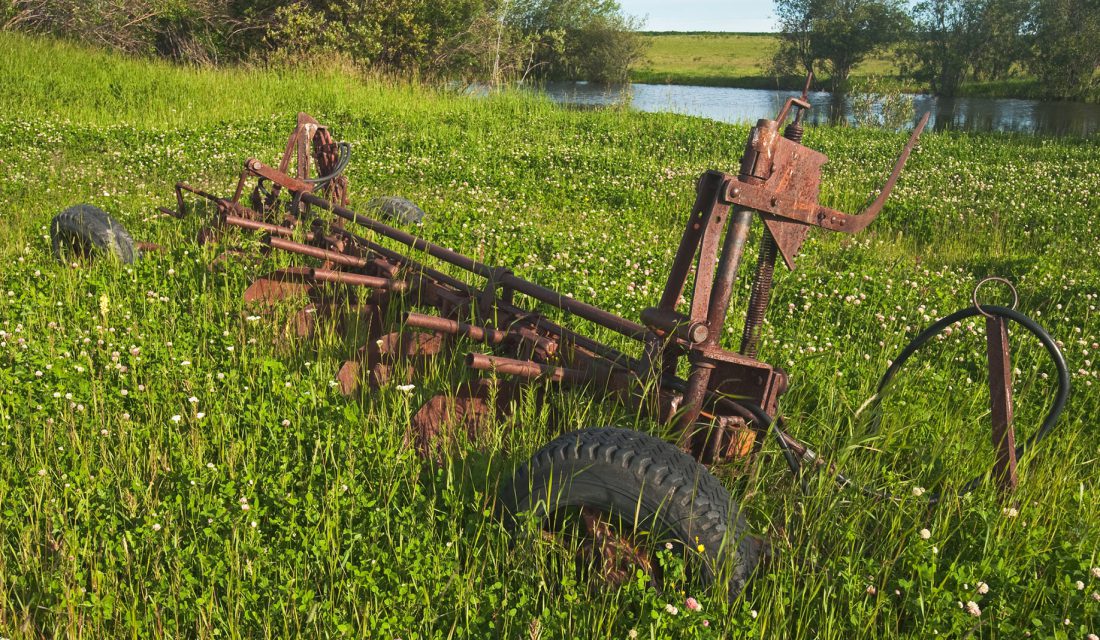Length: 2-3 centimetres
Weight: 1 gram
Status: Threatened in Canada
Meet the Western Chorus Frog

This small frog with a big voice is one of the first frog species to begin calling in spring. The trilling call of the Chorus Frog is similar to the sound made by a thumbnail running along the teeth of a comb. Despite being so loud, they are hard to see – even when calling – because of their small size and tendency to hide amongst the vegetation in small wetlands.
Preferred Habitat

The Western Chorus Frog is found in southern Ontario and Quebec. It has declined dramatically in western Quebec and eastern Ontario and is now a species at risk in Canada. The Western Chorus Frog breeds in shallow ponds or flooded fields that usually dry up by mid-summer.
The frogs lay their eggs in these wetlands, the eggs hatch quickly and then the tadpoles must develop and transform in a race against time before the pond dries up. Why do they lay their eggs in such a precarious place? Temporary ponds are fish-free because they dry up each year. Fish can eat a lot of frog eggs, so laying eggs where there aren’t predators is a real benefit – if the pond persists until the tadpoles transform.
Western Chorus Frogs remain widespread in western Ottawa but quite rare east of Ottawa in eastern Ontario. The first step in trying to protect the remaining populations east of Ottawa is knowing where they occur. It is easiest to survey for them by listening. The only catch is that Chorus Frogs call for only a few weeks each year in early spring, so there is a narrow window when surveys can occur.
Tracking the Western Chorus Frog

The Canadian Wildlife Federation has been conducting surveys in eastern Ontario for the little Western Chorus Frog for the past few years. Last year we tried to predict where they might occur by using digital maps of forest cover and wetlands in a geographic information system (GIS). Areas that had both forest and wetlands were promising areas to listen for Western Chorus Frogs.
We conducted surveys for calling frogs at 89 sites east of Ottawa based on the nearby presence of forests and wetlands. These were all sites with no previous Chorus Frog records. Chorus Frogs were heard calling at eight of the 89 sites, or nine per cent of the sites surveyed. This may not seem like very many sites, but during 2017 and 2018 we only heard Western Chorus Frogs at 21 sites east of Ottawa. An additional eight new sites is a huge increase in the number of populations.
Cryptic Species

Why are Western Chorus Frog populations so rare? An individual Chorus Frog population has a high risk of being wiped out in the short term.
- Chorus Frogs typically only live for one year. The tadpoles from this spring are next spring’s breeding adults.
- If a breeding pond dries up early because of dry conditions, then the entire population at the pond may be wiped out. The pond will not be occupied again until Chorus Frogs from a nearby pond re-colonize it. When there are a number of ponds close by, a pond will be quickly re-colonized by dispersing frogs from a neighbouring pond that did not dry up.
- If a pond doesn’t have any close neighbouring ponds because they have been plowed under, then once a Chorus Frog population winks out, the pond may never get re-colonized.
The good news is that Chorus Frogs are persisting in areas east of Ottawa. We now know of 29 breeding sites. The bad news is that most of these sites are on private land. All it would take is plowing some of these old fields and planting them with corn to wipe out more Chorus Frog populations.
Ensuring the long-term survival of Western Chorus Frogs east of Ottawa is going to require habitat stewardship around known breeding sites and possibly creating more temporary ponds near known breeding sites to ensure there are neighbouring breeding sites.
Learn more about our work with agriculture & habitat and forests & fields.




3 comments
Thanks David, we never did manage to get together for a chat.. Darn Covid-19 interfered even more! I would be happy to update you on our Chorus frog breeding and re-introduction research. We have metamorphs in the lab right now. Vance L. Trudeau (Dept. Biology, uOttawa).
They’re everywhere here in New Westminster, BC. LOTS of em.
That is WONDERFUL news!